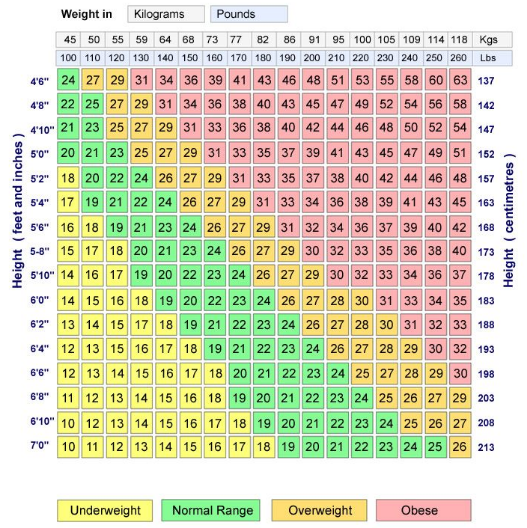

BMI can be used as a screening tool but is not diagnostic of the body fatness or health of an individual. Learn more.
BMI is an estimate of body fat and a good measure of your patients’ risk for diseases that can occur with overweight and obesity. For adults, a healthy weight is defined as the appropriate body weight in relation to height. This ratio of weight to height is known as the body mass index (BMI). People
One of the biggest questions guys and teens have as they grow and develop is whether they’re the right weight. One place to start is by learning about body mass index, or BMI.


Body Mass Index (BMI) is a person’s weight in kilograms divided by the square of height in meters. A high BMI can be an indicator of high body fatness. BMI can be used to screen for weight categories that may lead to health problems but it is not diagnostic of the body fatness or health of an
What the Numbers Mean: Below 18.5 = Underweight 18.5 – 24.9 = Normal weight 25 – 29.9 = Overweight 30 and above = Obese
Teen on what it’s like to lose 84 lbs.: ‘This journey is 80 percent mental’ People ‘Super agers’ are defying what it means to grow old, science says

Your body mass index (BMI) is one way to estimate your body fat and see if you are at a healthy weight. The Fit Teen BMI Calculator computes your BMI and will tell you how your BMI compares to other s. Enter your information below and click “Calculate” to find out your BMI and how it can affect

Doctors use body mass index (BMI) measurements to assess a ‘s physical growth in relation to other s the same age. Here’s how to calculate BMI and understand what the numbers mean.


These TeenHealthFX supplemental materials can be used to enhance your current health curriculum, providing additional information, discussion questions and resources on various topics related to teen health.


Assessment of weight and health risk involves using three key measures: Body mass index (BMI), Waist circumference, and Risk factors.